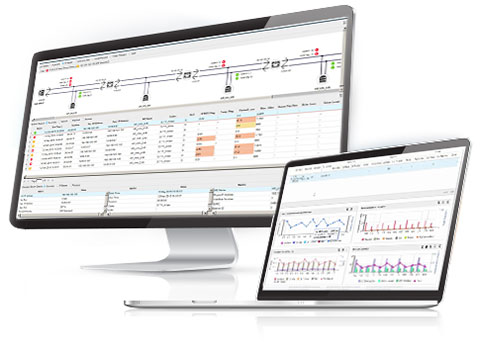
Eileen Haggerty
Area Vice President, Product and Solutions Marketing

What is Network Performance Management (NPM)?
Network Performance Management (NPM) refers to the comprehensive methodologies employed to ensure optimal operation of a computer network. This process involves an in-depth evaluation of each network component's performance metrics, such as error rates and packet loss.
By consistently monitoring these metrics in real-time and thoroughly analyzing performance logs, SNMP MIBs, xFlow datagrams, and/or network packet data, network issues can be identified and resolved proactively before they escalate into disruptive outages. Therefore, NPM solutions serve as the key to maintaining high-quality performance levels across all network devices and components, assuring a smooth and efficient network infrastructure.
Today's IT infrastructure is highly complex, with numerous components and interdependencies. How these network components perform individually and collectively determine the productivity of workers and the effectiveness of the business. End-user experience is dependent on everything working optimally.
When WAN link technologies, bandwidth availability and bottlenecks, and more are added to the technology mix, additional challenges can arise, resulting in performance issues. Being able to pinpoint problems across increasingly complex infrastructures can be difficult, complicating the prevention and resolution of problems before they impact user experience.
Why does Network Performance Management Matter?
Any sort of network disruption can be detrimental to a business. Impacts can include diminishment of productivity, harm to customer experience and satisfaction, and loss of profit. In today’s highly competitive business world, such disruptions can become a competitive disadvantage. Network performance management delivers end-to-end visibility and provides actionable insights that enable IT to proactively resolve network-based performance issues and ensure digital assets perform consistently and accurately.

What is the Difference Between Network Performance Management and Network Performance Monitoring?
While network performance management and network performance monitoring are closely related, they are not interchangeable terms.
- Network performance monitoring is a subset of network performance management and includes the active collection, measurement and evaluation of metrics from the various components that make up the network. As its name reflects, this process is one of monitoring, which is passive.
- Network performance management takes the results of the monitoring and assessment process, and then applies a set of policies, procedures, workflows, and tasks to achieve an outcome. Once the root cause of issues is identified, network performance management works to mitigate the problems and ensure issues are resolved in a timely manner.
Out of necessity, network performance management requires network performance monitoring in order to uncover problems and then enable the resolution of those problems.
What are the Elements of Network Performance Management?
Establishing good network performance management practices can be instrumental in supporting IT efforts to mitigate performance problems. The following are several NPM practices that should be kept in mind:
- Monitor and Collect Meaningful Data – The first step in effective NPM is monitoring the network and all applications to gather performance metrics. Monitoring tools can look for packet loss, conduct network traffic analysis, uncover network node outages, and measure bandwidth usage. An effective monitoring tool logs all performance issues, including the circumstances under which the incident(s) occurred.
- Analyze Data – The complexity of the network and all of its components means performance data collected will be copious. The right NPM solution will analyze the data to provide a comprehensive view of all layers of the network, offering insights into performance problems. This data can empower IT professionals to develop effective network management policies that proactively mitigate issues, improve productivity, and enhance the end-user experience.
- Watch for Security-related Problems – When network performance becomes degraded, it can be a sign of a security threat such as malware. For this reason, organizations should consider implementing an NPM solution that is able to uncover malware, identify unsecured network devices, and reveal other network vulnerabilities. Armed with these insights, IT can put protocols in place to mitigate the risk before the business is impacted and the reputation of the company is adversely affected.
- Employ Closed-loop Automation – By employing closed-loop automation, IT can leverage intelligence to match different problems with potential recovery steps. Removing the need to physically monitor and collect data, analyze, then remediate problems creates tremendous efficiencies and can dramatically improve network performance.
- Deploy Open APIs - Using open application program interfaces (APIs) to connect different components for up- and downstream communication, as well as data analysis can drive process efficiency.
- Leverage Data for NPM and APM - Sharing data from both network application performance management (APM) and NPM can provide a holistic view for quicker troubleshooting and enhanced visibility.


